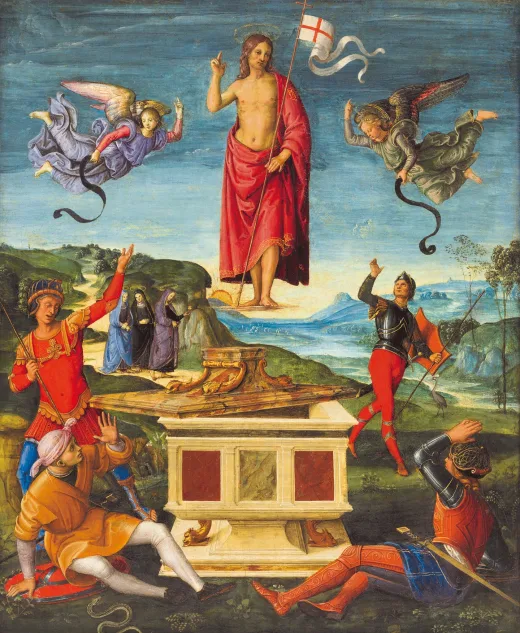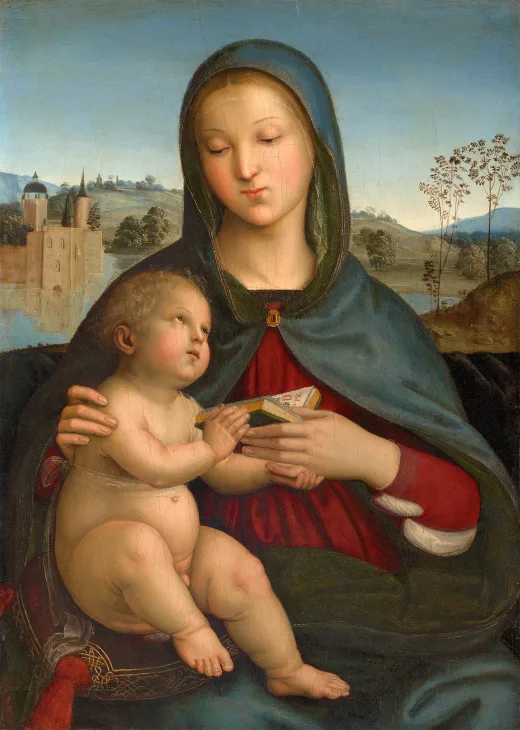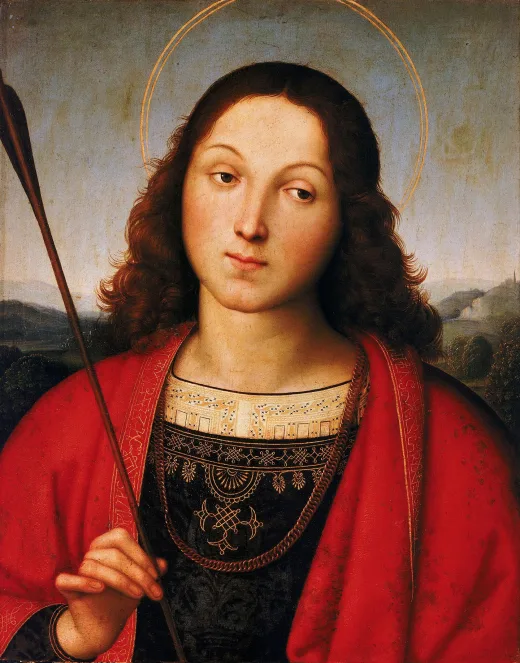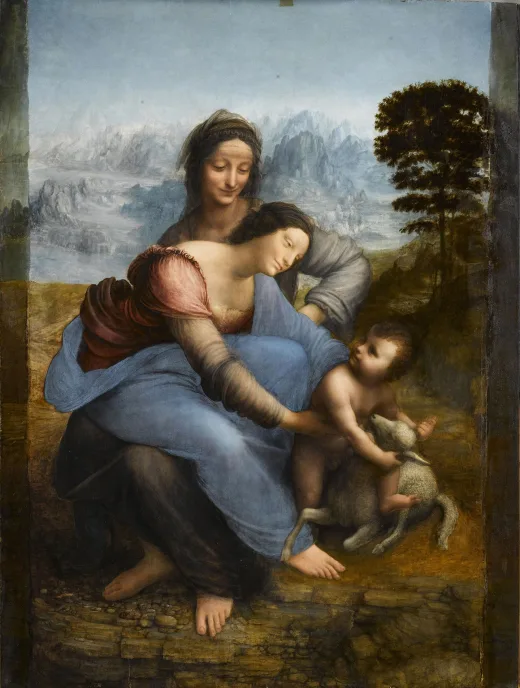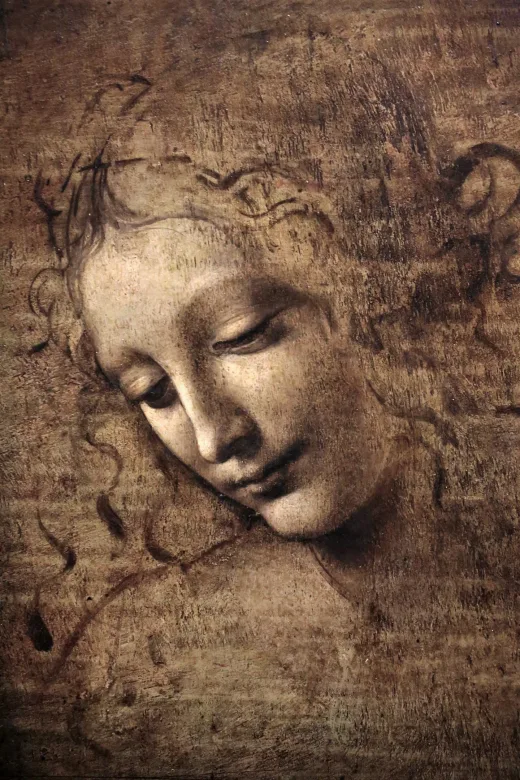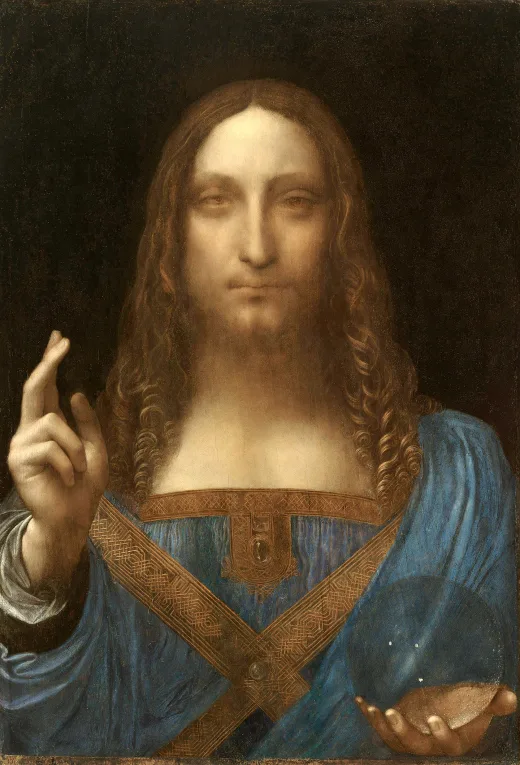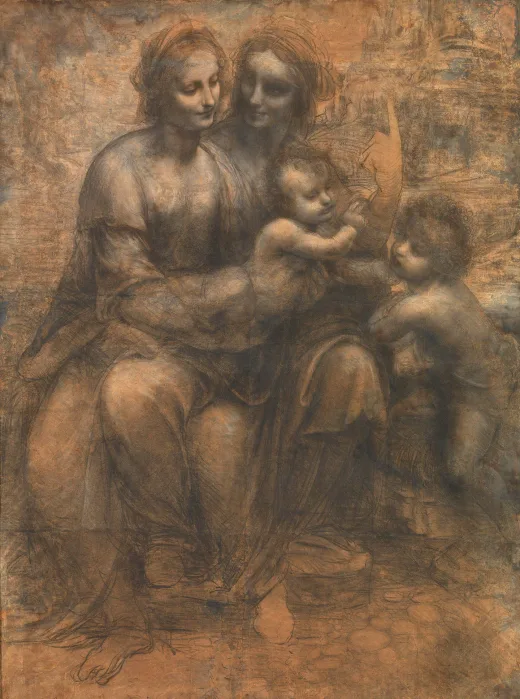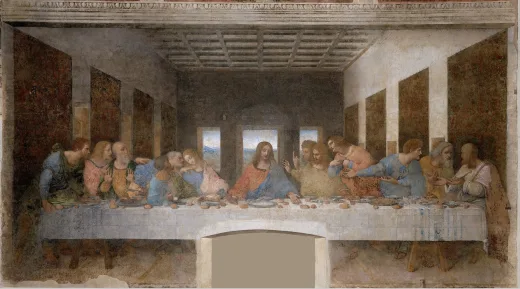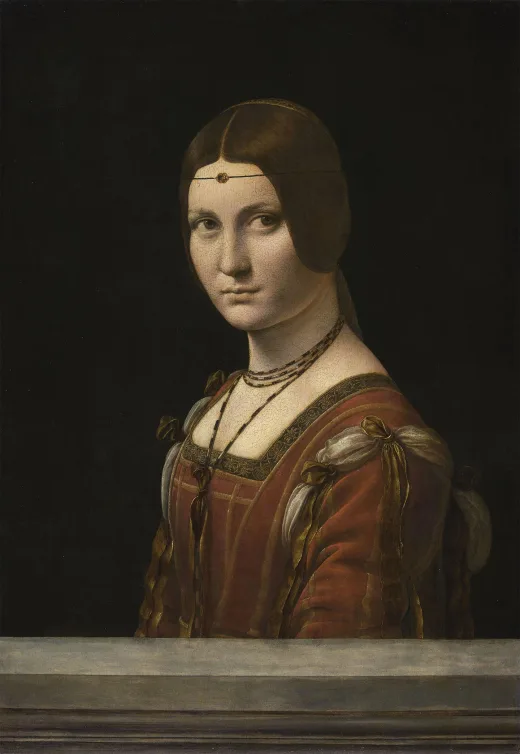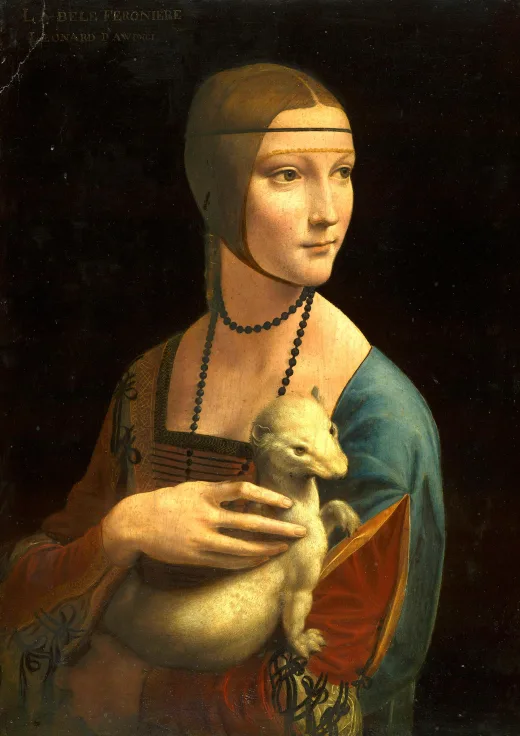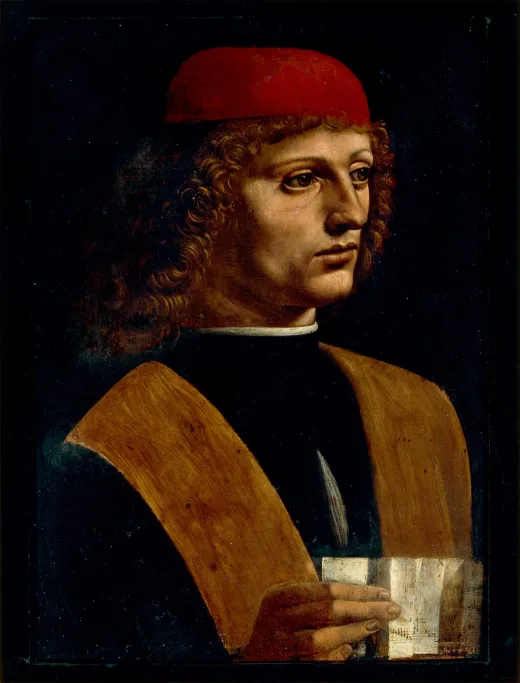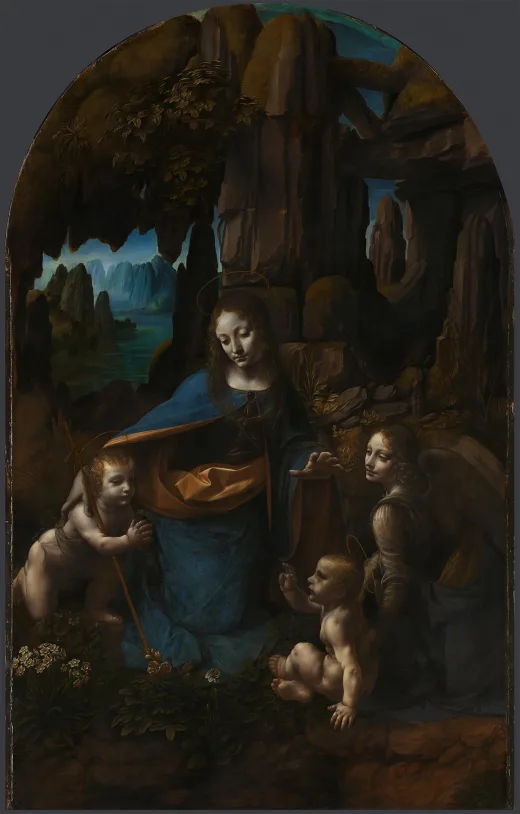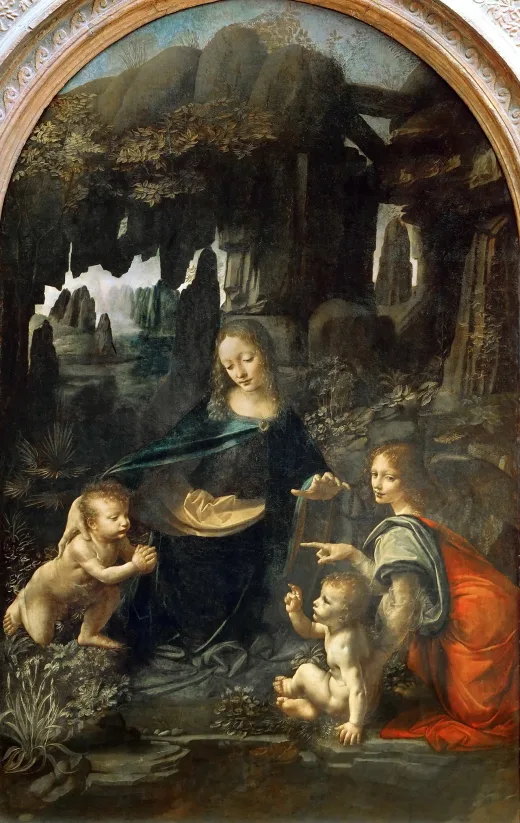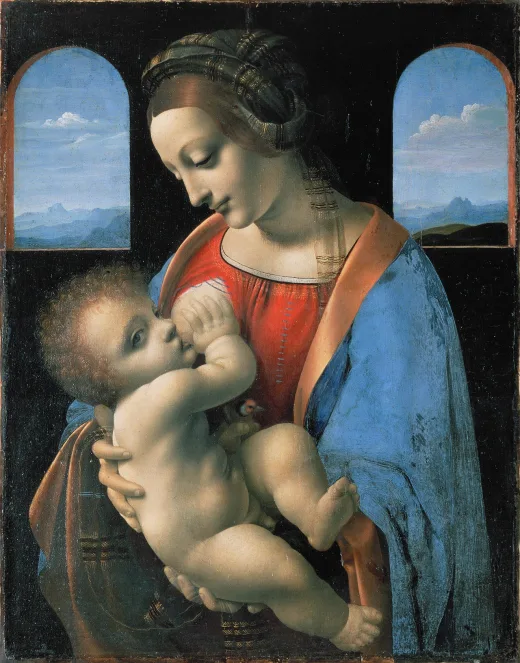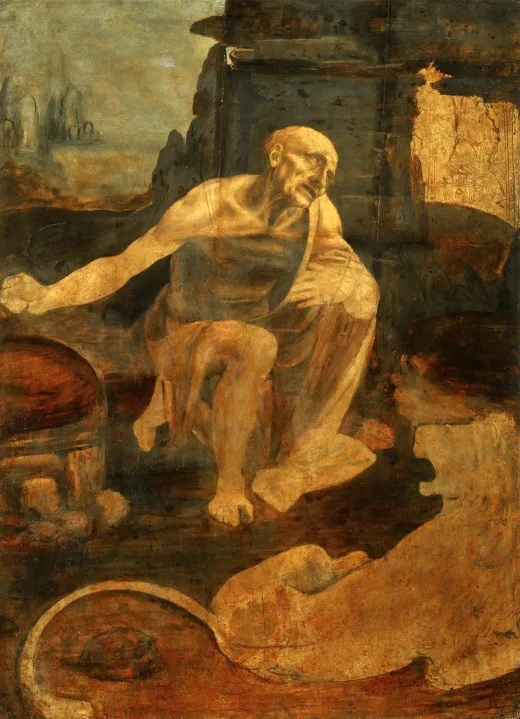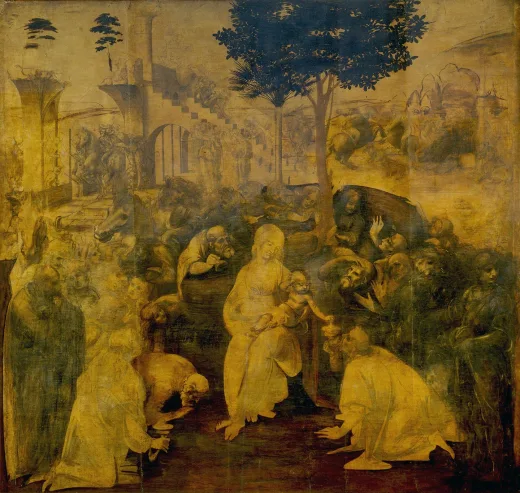拉斐尔作品《蒙德钉十字架》又名《加瓦里祭坛画》高清图片
原图尺寸:2540×4226像素(72 DPI)高清图
下载原图消耗2艺点
文件大小:15.75 MB
下载格式: TIFF / ZIP
作品名称:蒙德钉十字架
Mond Crucifixion(Gavari Altarpiece)
作品作者:拉斐尔(Raphael)
创作时间:约1502–1503
作品风格:文艺复兴盛期
原作尺寸:283.3 × 167.3 厘米
作品材质:杨木板油画
收藏位置:伦敦国家美术馆
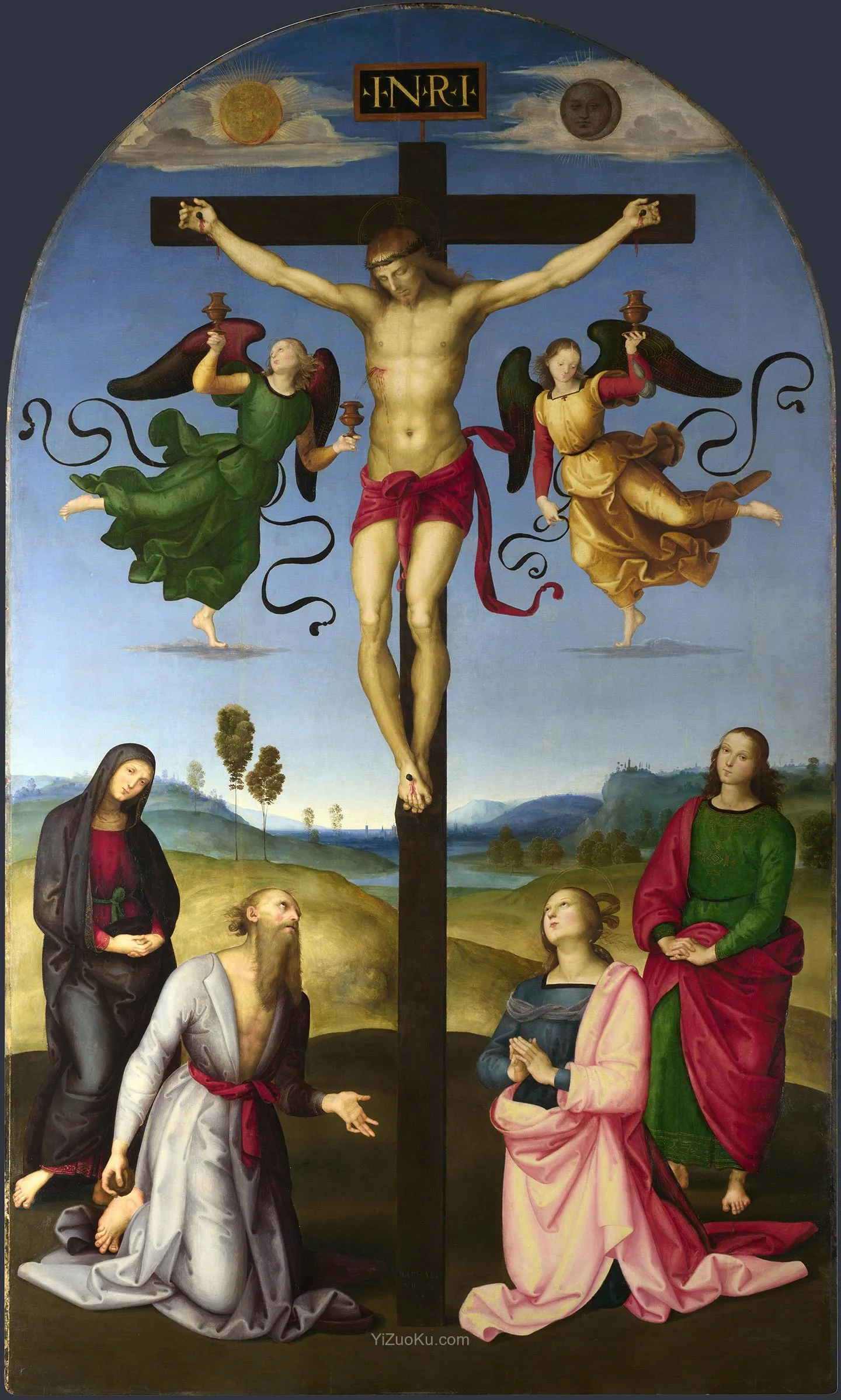
作品简介
蒙德钉十字架或加瓦里祭坛画是一幅白杨木板上的油画,可追溯到 1502-1503 年,是意大利文艺复兴时期艺术家拉斐尔最早的作品之一,可能是继 1499-1500 年巴龙奇祭坛画之后的第二件作品。它最初由四个部分组成,其中三个幸存下来,现在都分开了:一个主面板,上面画着被钉在十字架上的基督与圣母玛利亚、圣徒和天使,由路德维希·蒙德遗赠给伦敦国家美术馆,另一个是三面板的祭坛画,其中一块丢失了;幸存的两块面板分别是里斯本国立古代艺术博物馆的《克雷莫纳的尤西比乌斯使三个人从死里复活,身披圣杰罗姆的斗篷》和北卡罗来纳艺术博物馆的《圣杰罗姆拯救西尔瓦努斯并惩罚异端萨比尼安努斯》。
The Mond Crucifixion or Gavari Altarpiece is an oil on poplar panel dated to 1502–1503, making it one of the earliest works by Italian Renaissance artist Raphael, perhaps the second after the c.1499-1500 Baronci Altarpiece. It originally comprised four elements, of which three survive, now all separated: a main panel of the Crucified Christ with the Virgin Mary, Saints and Angels which was bequeathed to the National Gallery, London, by Ludwig Mond, and a three-panel predella from which one panel is lost; the two surviving panels are Eusebius of Cremona raising Three Men from the Dead with Saint Jerome's Cloak in the Museu Nacional de Arte Antiga, in Lisbon, and Saint Jerome saving Silvanus and punishing the Heretic Sabinianus in the North Carolina Museum of Art.
Background
This early work by Raphael was commissioned by the wool merchant Domenico Gavari as the altarpiece for his burial chapel in the south aisle of the church of San Domenico in Città di Castello, in Umbria, near Raphael's home town of Urbino. The side chapel was dedicated to Saint Jerome, where most of the painting's original pietra serena stone frame survives including the inscribed date 1503. Gavari was an associate of Andrea Baronci, for whom Raphael had already made the Baronci Altarpiece. Gavari's first son Girolamo (Jerome) died young.
Main panel
The main panel portrays the Crucifixion of Jesus, against a background of hills in the Umbrian countryside, with a view of Città di Castello in the distance. Jesus looks peaceful even as he is dying on the cross, crowned with thorns and clad only in a loincloth that has an unusual red colour. Above, a sun in gold leaf and moon in silver leaf appear together in the sky. Two angels with flowing robes and scrolling ribbons at their waists, one floating to either side of the cross, are using gold chalices similar to communion vessels to catch the blood dripping from Jesus' nail-pierced hands and spurting from the wound in his side. To the proper right (Jesus' left) kneels Mary Magdalene, with John the Evangelist standing behind her. To the proper left (Jesus' right) his mother Mary stands behind the kneeling Saint Jerome, who is holding a stone with which the hermit would piously beat his own chest.
The two kneeling figures are both reverently contemplating Jesus on the cross, while the two standing figures are wringing their hands while looking out at the viewer. A panel at the top of the cross bears the inscription "INRI", while the foot of the cross bears a Latin inscription in silver letters: "RAPHAEL/ VRBIN / AS /.P.[INXIT]" ("Raphael of Urbino painted this"). The work is lit from the left, consistent with the illumination of the altarpiece by the windows in the chapel.
The main panel measures 283.3 cm × 167.3 cm (111.5 in × 65.9 in) and is now housed in a 19th-century frame. The geometrical precision of the composition suggest it was laid out using a grid, using a rule and compasses to copy from a preparatory drawings. A drawing of a kneeling person, perhaps a study for the figure of Mary Magdalene, is held by the Ashmolean Museum in Oxford.
The painting was influenced by Perugino, whom Raphael knew while living in Perugia. It is similar to Perugino's c.1502 Monteripido Altarpiece, made the convent of San Francesco al Monte at Monteripido near Perugia, a similar crucifixion scene which has two similar angels with ribbons catching the blood of Jesus is chalices, accompanied by four figures, two standing and two kneeling, including the Virgin Mary, John the Evangelist, and Mary Magdalene, but the fourth is Francis of Assisi rather than Saint Jerome. In the Mond Crucifixion, Raphael has used Perugino's technique of cross-hatched shadows, but also used his fingers to smear and soften the wet paint in places, leaving some detectable fingerprints. Vasari later famously commented that no one would have believed it was painted by Raphael rather than Perugino if he had not signed it.
